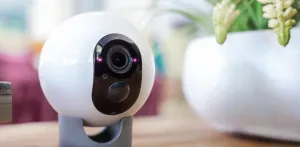Why You Might Start Thinking About Home Security Cameras
Remember that time I came back from a week-long vacation, only to find the back window mysteriously cracked and my nerves absolutely shattered? Yep, that was the moment I decided to dive into the world of home security cameras. It's not just about catching bad guys — it’s about peace of mind. So, whether you're trying to keep tabs on your furry friend while at work or ensure your home is safe while you're sipping cocktails in the Bahamas, navigating the maze of home security cameras is something worth discussing.
Understanding Different Types of Home Security Cameras
Before you rush off to buy a camera, let’s talk about the different types out there. (lorex.com) It’s kind of like dating — you have to know what you're looking for before you start searching. Here's a brief rundown:
- Indoor cameras: Great for keeping an eye on the inside of your home, like watching pets or making sure your kids are actually doing their homework.
- Outdoor cameras: These are designed to brave the elements. Perfect if you want to monitor who's coming up the driveway or loitering around your garden at night.
- Doorbell cameras: These pull double duty. Not only do they let you see who’s at the door, but you can also speak to visitors without having to open the door, which is a plus for safety and convenience.
- Wireless vs. Wired: Wireless cameras are easier to install and offer more flexibility in placement, but they rely on your home Wi-Fi and need regular battery changes. Wired cameras involve a more complex setup but generally provide more stable connections.
My first camera was an indoor one. I just needed something to check in on my pup during my long office days. It was simple, slightly conspicuous, and after watching my dog sing the songs of his people to my unsuspecting neighbors, hilariously enlightening.
Key Features to Look For
Not all cameras are created equal! Here’s what you should keep an eye out for when selecting the perfect security camera:
- Resolution: Higher resolution means clearer images. Look for at least 1080p — trust me, clarity matters when you’re trying to figure out if it's a burglar or just a tree branch swaying outside your window at 2 AM.
- Field of view: This determines how wide an area your camera can capture. A larger field of view means less blind spots. I learned this the hard way when half my yard ended up out of the camera’s sightline.
- Night vision: Essential for round-the-clock monitoring. Not all night vision is created the same, so check whether a camera offers full-color night vision or if it’s the traditional black and white.
- Motion detection: Cameras with motion sensors can alert you to activity in real time, directly to your phone or whatever smart device you choose. Some even have ‘smart detection’ that distinguishes between animals, vehicles, and humans.
- Storage: Cloud storage is convenient for accessing footage from anywhere, but some prefer local storage for privacy reasons. Evaluate what feels right for your own peace of mind and consider the potential extra costs of subscription services.
- Integration: If you're a techy person, you might want a camera that plays nice with your existing smart home system. Compatibility with platforms like Amazon Alexa or Google Assistant can make your life much simpler. (securitysenses.com)
Installation and Placement Tips
Reality check: that moment when you realize installing security cameras involves more than just sticking them on a wall. Here's how to avoid the common pitfalls:
- Position cameras above reach but within a clear line of sight to key areas you want to monitor.
- Consider the angle and direction of the sun to prevent glare in your videos.
- Make sure there are no obstructions like trees or decorations blocking the view.
- If using outdoor cameras, ensure they are weatherproof or housed in protective casings.
- For wired systems, routing cables can be a challenge, so plan your path beforehand or consider hiring a professional. (www.cnet.com)
And one more tip from my own misadventure — check if the camera angle covers all the entrances. Imagine my face when I realized my garage door was a blind spot after all the installation efforts!
Keeping It Legal
Guess what? Slapping cameras all over your property can sometimes tip-toe around legality issues. Always align with your local laws regarding privacy and surveillance:
- Inform your neighbors if your cameras might capture areas of their property.
- Avoid placing cameras in private areas like bathrooms — even inside your own home, unless you enjoy courtroom dramas.
- Check whether you need to display signs informing people that they are being recorded.
Making sure you’re covered legally is as crucial as the physical coverage your cameras provide.
Final Thoughts and Smart Investments
Finding the right home security camera feels like a small victory in personal security and technology. Whether it’s making sure your kids are safe, catching the sneaky raccoon that raids your trash, or just keeping an eye on deliveries, a camera can make a huge difference.
Think about what you specifically need, research models, and consider how they meld with your lifestyle. And if you’re feeling overwhelmed, remember this is about enhancing your safety and peace of mind — so take your time getting it right.
Once you’ve settled on the right setup, it’s all about enjoying that added layer of security and, hopefully, never having to review footage of a real intruder. Instead, you’ll probably have hours of hilarious clips of everyday life unfolding when you’re not around. As for me, my next goal is to catch the mysterious midnight snack thief in our house — and I have a hunch it’s not a raccoon this time!
Stay safe, stay informed, and make your home security work for you!





